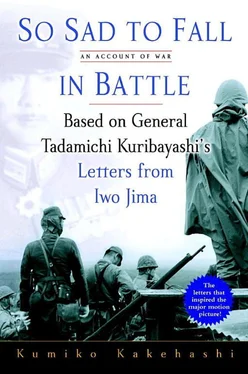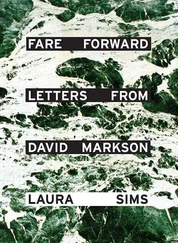Army officers who had attended the Military Preparatory School were often criticized for having an overweening sense of being “special” and also a narrow way of thinking. The Military Preparatory School had been modeled on the Prussian schools that turned the sons of the aristocracy into soldiers, and high-ranking officers often sent their sons to the school.
Kuribayashi, good at English thanks to graduating from an ordinary middle school, chose to study in the United States. He went off alone, leaving his wife and son behind in Japan. Attached to the U.S. First Cavalry Division for military study, Kuribayashi found the time to audit courses at Harvard University and the University of Michigan, where he studied English, American history, and U.S. current affairs.
Kuribayashi was fascinated by the motorization boom in the United States. He acquired a Chevrolet K, a state-of-the-art model at the time, learned how to drive it, and in December 1929 had an “adventure,” driving it the entire 1,300 kilometers from Kansas to Washington, D.C. His illustrated letters depict all the difficulties he encountered on his journey, including crossing mountains on narrow, snow-covered roads and getting a tire puncture in the middle of a snowstorm.
In a letter to his eldest brother, Kuribayashi recounts a surprising experience he had during this trip when his car broke down, leaving him stranded. A girl of seventeen or eighteen who happened to drive by—herself at the wheel—repaired his car. Kuribayashi was most impressed that in the United States anyone over sixteen with the right paperwork was allowed to drive, and that everyone was able to perform routine maintenance themselves.
It was from everyday experiences like this—and not just from book learning—that Kuribayashi developed a sense of the economic gulf separating the United States and Japan. The United States was a place where “the housekeeper lady” who looked after Kuribayashi could also own her own car.
The housekeeper lady has recently
Bought herself a new car
And is showing it to Daddy
“I see
I see
I see
That’s great
If you take good care of it
It will last a good long time.”
“Hey, captain
I just bought myself this new car
It cost me 400 dollars
It’s an old model, so they gave me a good price.
The old one? I gave it to my husband.
I keep separate accounts from him
My husband is a genuinely good man
But he likes to drink and gamble
And I don’t like it when he nags me for money
Even since the beginning of this year, I’ve lent him so much
Chitter-chatter-chitter-chatter blah-blah-blah-blah.”
What Daddy was thinking was:
An automobile like this
Is much better than the buses
Running in the Japanese countryside
Japan has got to pull itself together….
That, and her keeping her money separate from her husband,
It’s so typically American….
Kuribayashi started on his way home in April 1930, but as he made stops in London, Paris, and Berlin, he only got back to Japan in July.
In the course of his two-year stint in America, Kuribayashi had socialized with American military men and their families, and he counted some of them as true friends. One of them was Brigadier General George Van Horn Moseley, the head of the U.S. Army Cavalry School.
At the Kuribayashi house, I was shown the photograph album covering his years in America. It included a portrait of Brigadier General Moseley, with the inscription: “With high regard and esteem. I shall never forget our happy association together in America. Best wishes to you and to Japan.”
While Kuribayashi waited for the Americans to come ashore, deep in his underground bunker surrounded by the stench of sulfur, did he think about the newspaper delivery boy, about driving in his Chevrolet, or about the families of the soldiers who had invited him into their homes?
February 19, 1945; D-day. Kuribayashi was trapped in one of the ironies of history, about to engage the United States—the country he least wanted to fight—in battle at the front line of his Japanese homeland.
CHAPTER SEVEN
THE ISLAND WHERE YOU WALK ON THE DEAD
—
“IF YOU LOOK OUT OF THE WINDOW ON THE RIGHT, IWO JIMA WILL soon be coming into view.”
When a crew member made this announcement, everyone undid their seat belts and got out of their seats. Two and a half hours had passed since the Air Self-Defense Force C-1 transport plane had lifted off from Iruma Air Base in Saitama Prefecture.
The transport plane had only a few modestly sized portholes. Taking turns to peer out of them were members of the families of the Japanese soldiers who had died fighting on the island.
I placed my forehead against the faintly misted glass and looked down. The island was small enough to fit inside the small round window only 50 centimeters across.
“Such a tiny place,” whispered an old woman beside me as she leaned on her cane. She had been holding a bunch of white flowers to her chest ever since we took off at Iruma.
We only started our descent after slowly circling the island many times, as though to give the families time to burn its image onto their retinas.
“Did you know that there are bones of the dead sleeping under the runway? When we disembark from the plane, we will be walking on the dead.”
The man who said this to me was in late middle age. His father had died on Iwo Jima.
I had heard about the bones beneath the runway from many people. The present Self-Defense Force airfield is located on the site of the Japanese forces’ wartime Motoyama Airfield. When the Americans captured the airfield, it was littered with the corpses of the Japanese soldiers who had fought to the death defending it. In their haste to repair and enlarge the runway for the conquest of the Japanese homeland, the Americans reportedly left the bodies uncollected and spread asphalt directly on top of them.
When the Ogasawara Islands, of which Iwo Jima is a part, were returned to Japan, the Self-Defense Force took over the airfield and constructed a new runway in a slightly different location from the American one. At that time, emergency digs were carried out in thirty-three locations in one area and as many of the dead as possible were recovered, but the remains of many others are still thought to be buried beneath it.
There, where their fathers, husbands, and brothers died, the families have no choice but to walk upon the bones of the dead. That is Iwo Jima.
The Self-Defense Force is not alone in making use of the runway; carrier-based U.S. planes also practice nighttime take-offs and landings there. Since no one lives on the island, there is no one to protest the noise, and as Iwo Jima is far out to sea and free from artificial light, the airfield makes a perfect stand-in for an aircraft carrier out on the high seas. Planes of both the Japanese Self-Defense Force and the American military are thus constantly taking off and landing on top of the remains of Japanese soldiers.
The thought is enough to make you tremble as you step off the plane, but if you stop to think about it, this is not the only place on the island where there are bones of Japanese soldiers. After all, 95 percent of the more than twenty thousand Japanese soldiers who fought on Iwo Jima died in the battle. Most of the one thousand or so who survived to become prisoners of war were seriously wounded and were taken care of by the U.S. forces.
Methodical collecting of the remains has been conducted since 1970, but the remains of more than thirteen thousand men are still lying beneath the earth. No matter where you are, the very act of walking on the island is to walk upon the dead.
Читать дальше












